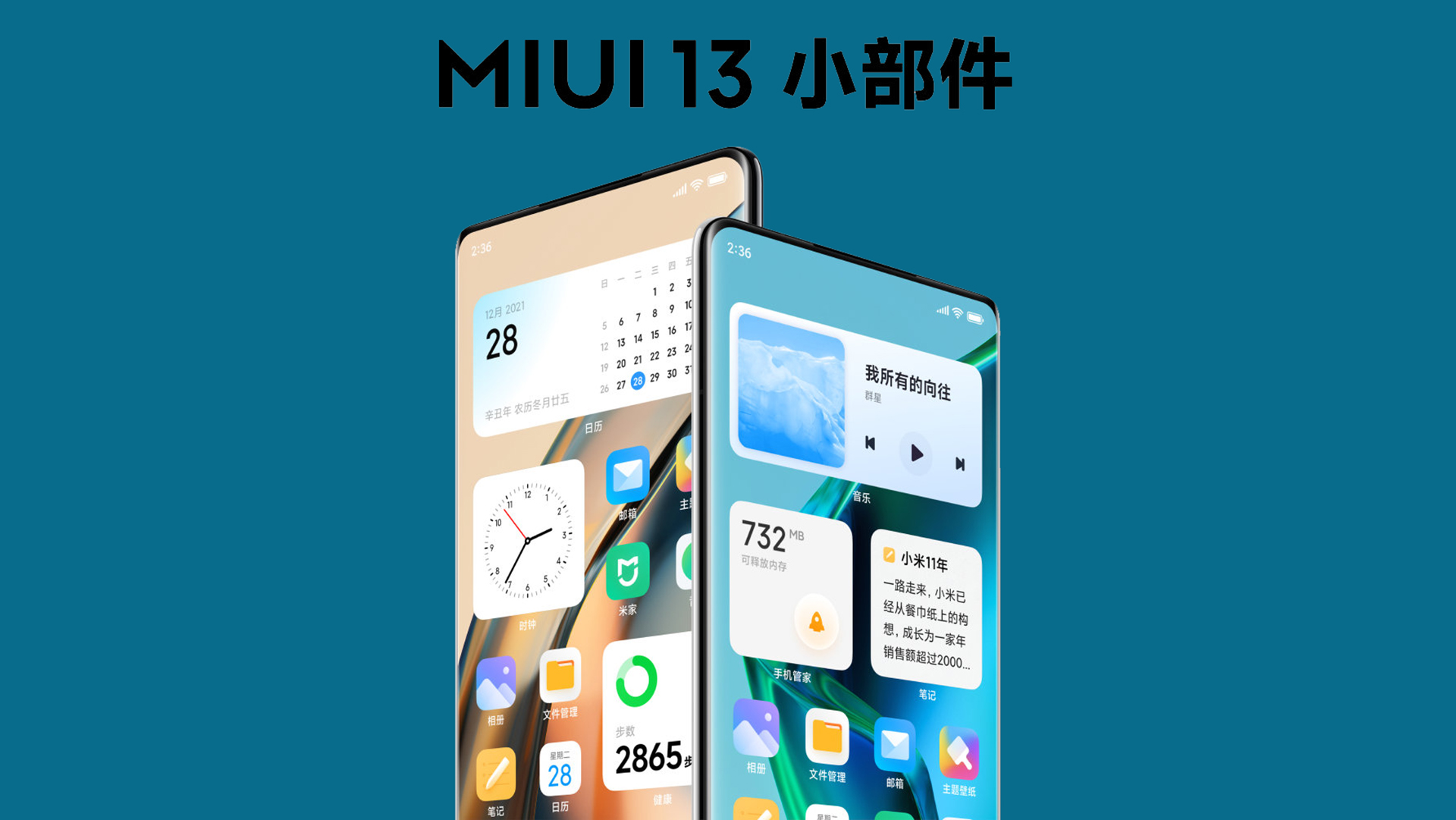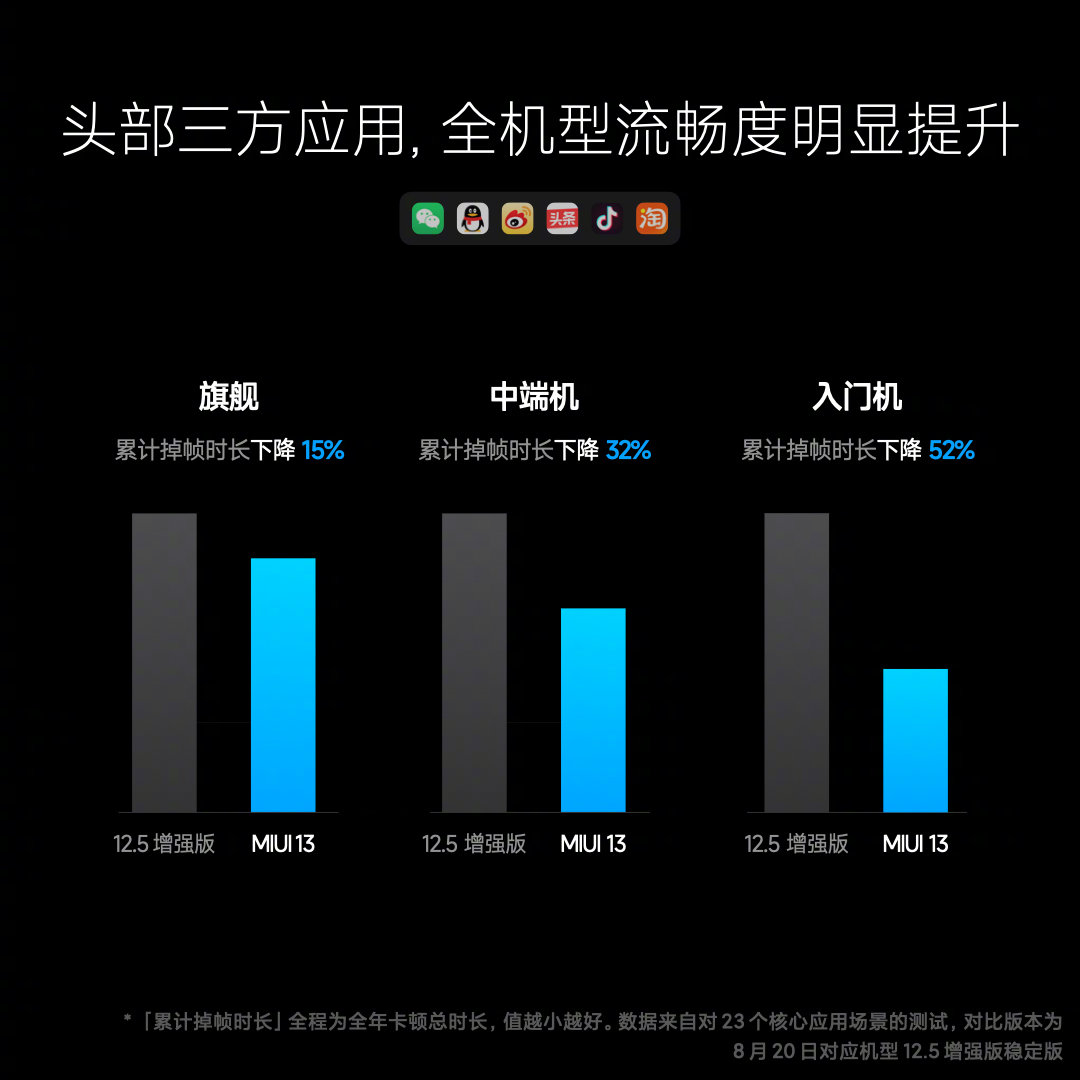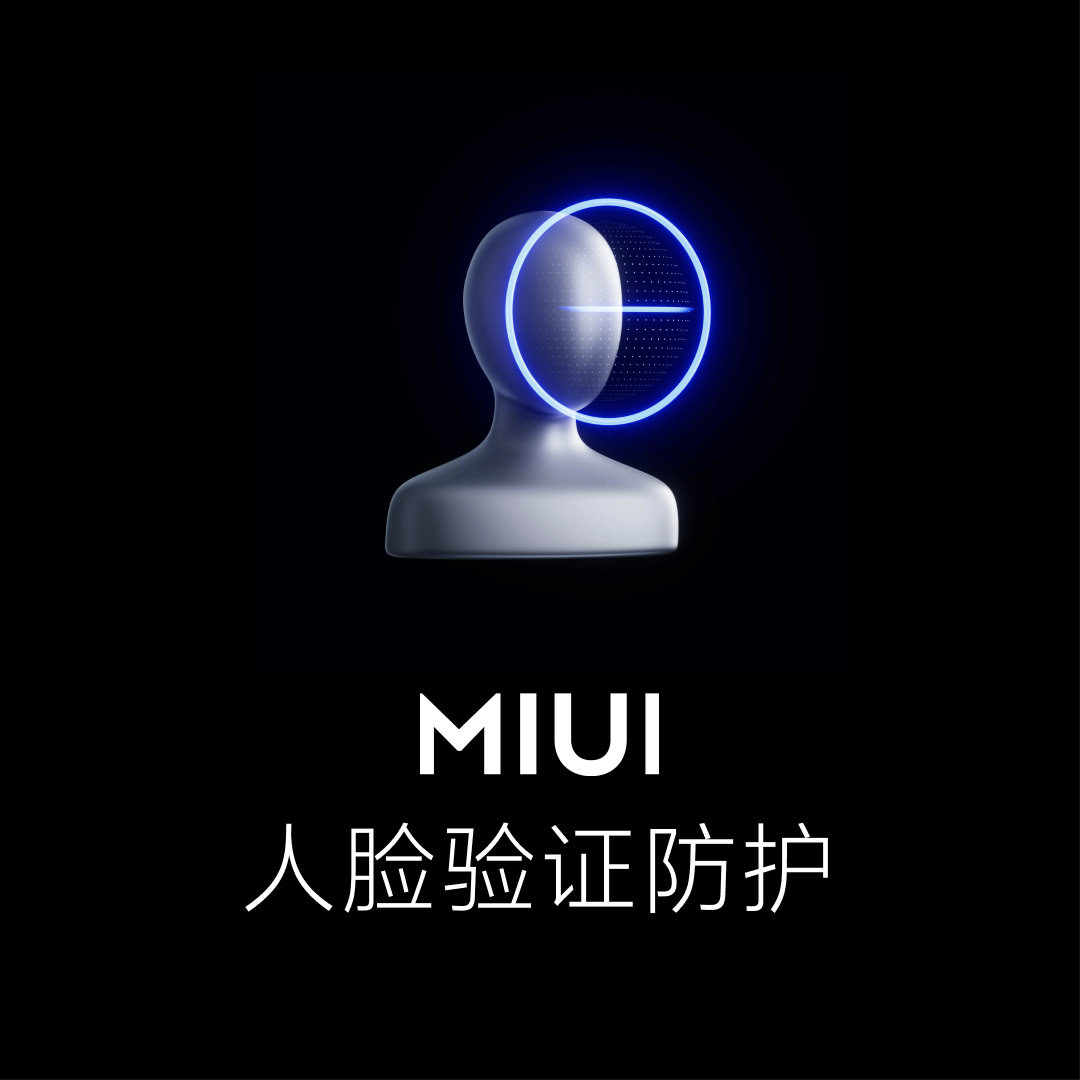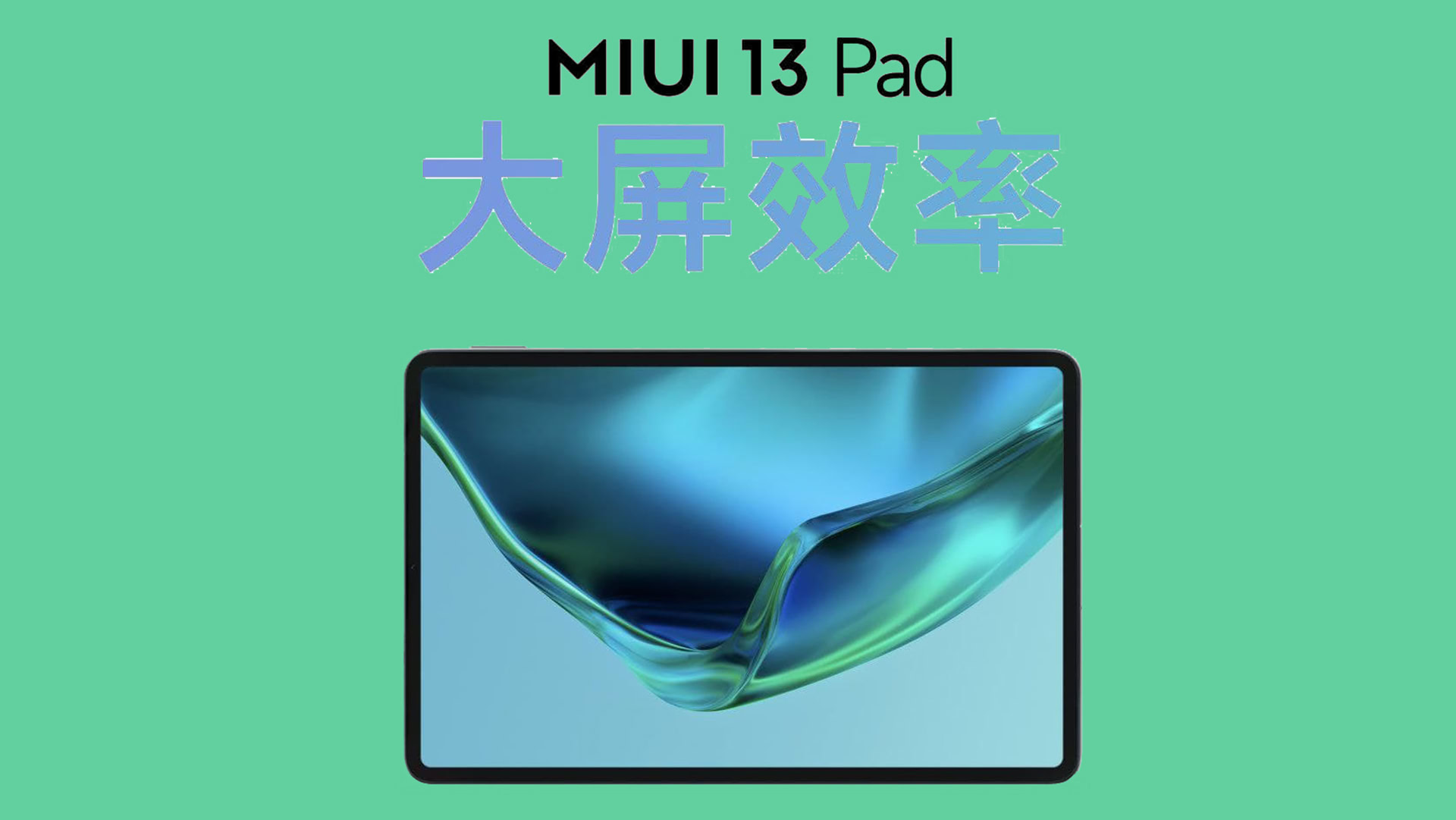Affiliate links on Android Authority may earn us a commission. Learn more.
Everything you need to know about MIUI 13
Xiaomi officially launched MIUI 13 alongside its 2022 flagship smartphone line, the Xiaomi 12 series.
As one would expect, MIUI 13 comes with many new features and enhancements. The three major categories of updates are performance, security, and design. Below, you’ll find out what you can expect within each of those categories.
Additionally, there’s a version known as MIUI 13 Pad. Multi-tasking features are the main difference here to make better use of the larger displays of tablets and foldables.
You can expect to see MIUI 13 on the new Xiaomi 12, Xiaomi 12 Pro, and Xiaomi 12X when they land in stores. Starting in the first quarter of 2022, you’ll also see an update land on the Mi 11 series. The Pad variant will also start rolling out to Xiaomi tablets around that same time. Find the full list of devices on Xiaomi’s rollout roster below.
MIUI 13: Performance
Xiaomi is putting a lot of emphasis on how much more stable and fast MIUI 13 is as compared to the previous version 12.5. In the chart below, you can see Xiaomi’s claims for stability on flagship, mid-range, and budget devices (in order from left to right). Xiaomi is measuring this by the number of dropped frames in popular apps.
According to Xiaomi, its flagships saw 15% fewer dropped frames with the latest version of MIUI. Meanwhile, mid-rangers saw up to 32% fewer drops and budget models saw a whopping peak of 52% fewer drops. Obviously, this data likely came from phones in peak conditions, so real-world results might vary significantly from these claims.
Folks who like to have lots of apps opened at once should be happy with the enhancements of MIUI 13. Xiaomi claims it had 14 apps active on the Mi Mix 4 running MIUI 13. Comparatively, the HUAWEI P50, vivo X60 Pro Plus, and OPPO Find X3 Pro could only have 13, nine, and five apps respectively.
At the global Redmi Note 11 series launch, Xiaomi outlined several additional performance enhancements coming to MIUI 13.
- Liquid Storage: Xiaomi claims that this feature is effectively a smart defragmentation tool that “actively manages stored data” on the device, including where it’s written. The company notes that it improves storage performance over the device’s lifespan.
- Atomized memory: Like Liquid Storage, this feature manages RAM used by apps. It splits apps’ tasks into unimportant and essential processes, then discards the former. It’s unclear how this will affect the background culling of apps, but we’ll have to wait and see this feature in action before passing judgment.
- Focused Algorithms: This feature “dynamically allocates system resources based on usage scenarios.” Essentially, the feature allows running apps more CPU muscle, improving performance.
- Smart Balance: Xiaomi claims this feature improves battery life by balancing performance demands with power consumption.
As usual, we’ll need to get our hands on MIUI 13 to test out these claims for ourselves. However, if this information holds up, Xiaomi fans should be pretty pleased with the advancements here.
See also: Everything you need to know about Xiaomi’s Android skin
MIUI 13: Security enhancements
Security is becoming ever more important in our connected age. Xiaomi understands this and is incorporating quite a few security tweaks within MIUI 13.
The company put a big emphasis on face verification, for example. It is enhancing the accuracy of face detection. For example, its software now automatically blocks out torsos to only focus on the face itself. It also gets a more well-rounded look at your face to prevent people from being able to use photographs for tricking the system.
Xiaomi also touted two other new security-centric features of MIUI 13 known as “privacy watermark” and “fraud protection.” However, the company didn’t elaborate on what these features do exactly. We’ll need to wait for more information on what these could be.
MIUI 13: Design
MIUI 13 comes with a slew of design tweaks, most especially towards widgets. In the images below, you can see numerous new widgets:
Xiaomi is also using a new font called MiSans. It’s a simple and elegant typeface that Xiaomi will eventually provide for free for anyone to use on any platform.
There are also nearly 50 new wallpapers available within MIUI 13, including a handful of live “blooming” wallpapers. Download them here.
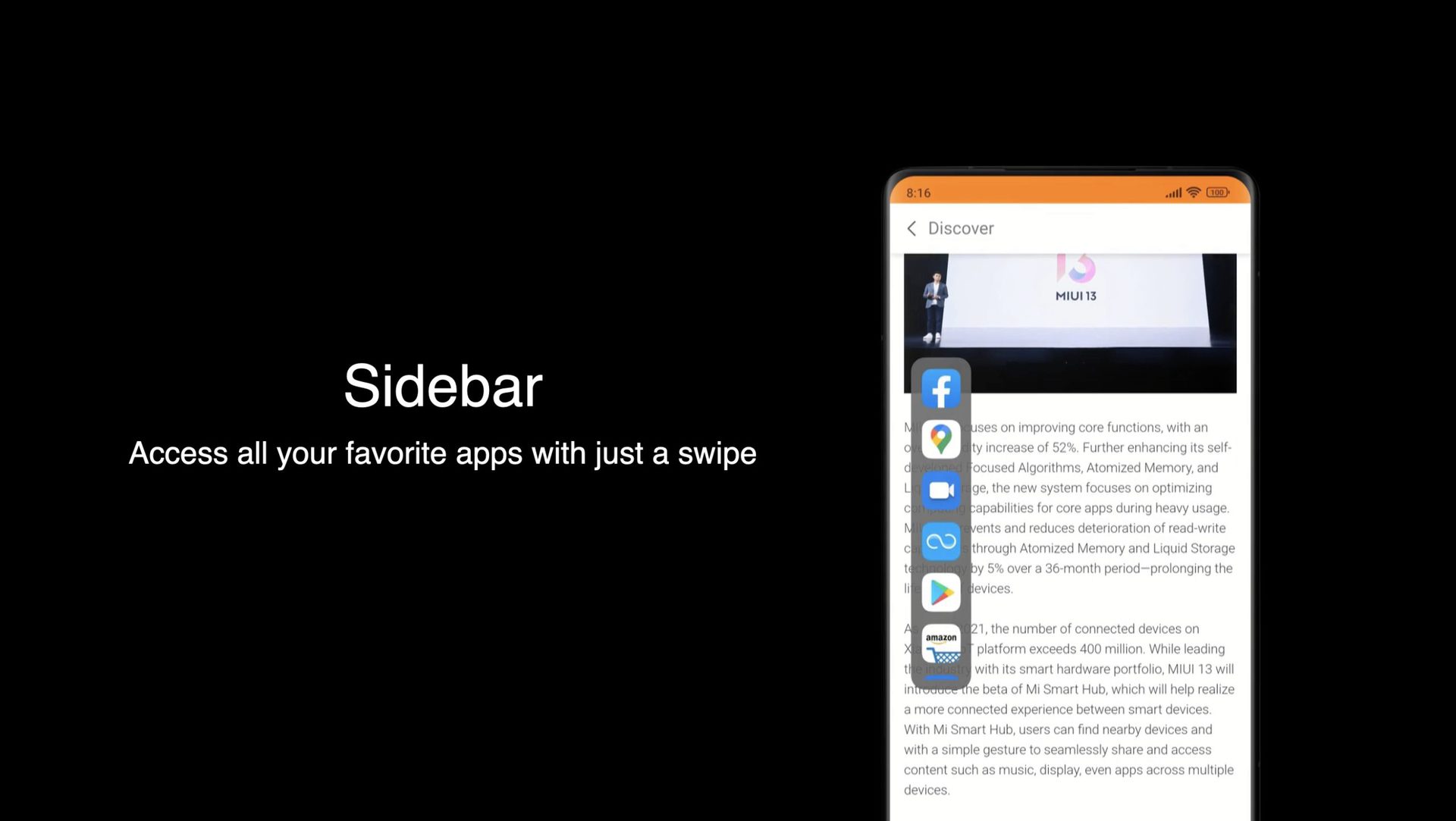
Additionally, Xiaomi also confirmed that MIUI 13 will feature a new Sidebar that aims to boost multi-tasking efficiency. Users can swipe from the side of their display to access a floating shortcut bar with up to ten apps.
Xiaomi MIUI 13 Pad
Finally, there’s a subtle variation on Xiaomi’s new software known as MIUI 13 Pad. This version is geared towards devices with larger displays, including tablets and foldables.
As one would expect, multi-tasking and productivity take center stage here. Xiaomi has incorporated a new shortcut to quickly switch from windowed and full-screen modes, for example. It has also optimized 3,000 popular apps to take better advantage of larger displays. Keyboard shortcuts are also on offer as well as a new global taskbar and better drag-and-drop support.
MIUI 13 release date, availability, and eligible devices
Xiaomi has confirmed that MIUI 13 will reach 18 phones in its initial Q1 2022 rollout phase. That means the below-mentioned devices should get MIUI 13 anywhere between January and March this year. However, do note that availability could vary depending on the region you’re in.
Here are all the global Xiaomi models getting the MIUI 13 update in Q1 2022.
- Mi 11 Ultra
- Mi 11
- Mi 11i
- Mi 11 Lite 5G
- Mi 11 Lite
- Xiaomi 11T Pro
- Xiaomi 11T
- Xiaomi 11 Lite 5G NE
- Redmi Note 11 Pro 5G
- Redmi Note 11 Pro
- Redmi Note 11S
- Redmi Note 11
- Redmi Note 10 Pro
- Redmi Note 10
- Redmi Note 10 JE
- Redmi Note 8 (2021)
- Redmi 10
- Xiaomi Pad 5
Notably, those in India can look forward to a separate rollout schedule and list of devices. Find the phones scheduled to receive MIUI 13 from Q1 2022 below.
- Mi 11 Ultra
- Mi 11X Pro
- Xiaomi 11T Pro
- Mi 11X
- Xiaomi 11 Lite NE 5G
- Mi 11 Lite
- Redmi Note 10 Pro Max
- Redmi Note 10 Pro
- Redmi Note 10
- Redmi 10 Prime
